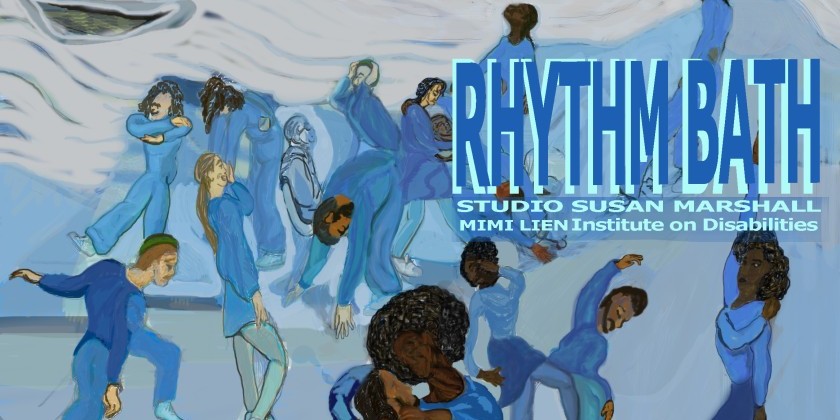AUDIENCE REVIEW: PHILADELPHIA, PA: Studio Susan Marshall presents "Rhythm Bath" (World Premiere)

Company:
Studio Susan Marshall and Mimi Lien
Performance Date:
September 20 - 24, 2023
Freeform Review:
Part of the Philly Fringe 2023, Studio Susan Marshall's World Premiere, "Rhythm Bath," with a group of ten dancers prepared to embody the anti-ableist movement. In collaboration with the Temple University Institute on Disabilities, College of Education and Human Development.
The dance field and medical field delivered a compelling conceptual evening for an in vivo experience like, stepping into the bodymind. Stepping forward in the movement for Studio Susan Marshall, means offering the medium to audiences that may be denied access in whatever terms that are not-negotiable for them to feel comfortable in a space. Its means were deepening our understanding, without being condescending to the subject, and without objectifying the bodies of people with disabilities, and it becomes this important piece in the history of conceptual art. Unexpectedly, it took grasp of my subconscious, in the form of a dream that left me enlightened by past trauma, and suddenly transported me back to 2011 when being in a hospital room meant life or death.
This point of hallowed ground in which we identify with will either support, or constrict us to the bodymind, whether we want to see it, or not. We are granted ableist views by cultural conditioning. From further reading of, Leah Lakshmi Piepzna-Samarasinha’s essays in Care Work: Dreaming Disability Justice, there is a movement aligned with values of health, healing, and sharing care that reads from a perspective consent. The performance event, “Rhythm Bath,” rendered a future revised for caring for people in all shapes of being in a distincitve aesthetic language. The sterile surrounding, and immersive dance on the same level as the audience corrects the hierarchy first off, and envisioned where we stand: in a controlled environment for a sensory timeline, to be predictable, and curated a dance to the rise and fall of our breath. This was done in collaboration with installation artist, Mimi Lien, performers and audience members, from noticing a ripple effect in the movement, we were all part of the installation .
These airy-moments that were memorable by the low to high intensity of the dancers, and the lighting, or sound installation that by description,
“Dancers move throughout the space, Ambient music with light rhythm, More energized dancing throughout the space, ...mostly stationary in small groups, Dancers move in and out of the space, Movements of lights and ceiling fabric…”
To give us an idea of how reflective our environment and body interact with the performance happening throughout the space. Being opened up to this fabric of social acceptance, while at the same time interlocated by a diversity of dancers. We recognized the performers as they reappeared, and repeated a flowing detail that had important reference to their body. The realm or pool we were all a part in relationship with explained this shared space as an ecosystem. The fogginess of the space, or where the dancers were going remained physically uncertain, but dressed in stylish, but medical scrubs, cleverly altered, were interesting to the tactile mind.
Tactilely forcing us to realign with situations or scenarios, rotating forward and in reverse, made us become aware of our surroundings. The set was in the mind, a control center, and the disorienting factor of uncertainty elaborately displaced by the performers in connection the - what if- we lose control? The mind of course is in the body, and now we are completely immobilized by our consent in perspective. “Rhythm Bath,” designed from this institutionalized care, formed the memory of being in that hospital room, that terrible feeling, the feeling of helplessness, and seeing someone we love who needs care.
Our experiences form different desires for everybody, but to Plato and the idea of a city as it referred to our body, and its principle of how it was made up of different functions, then placed us in this bath together, in this living organism. Leading to this point of darkness, which was ephemeral, except in the rolling thunder or in the moderate ambient and tonal music. This unexpected darkness of course came much later, after leaving this experiential in vivo.
“Rhythm Bath,” like Le Scaphandre et Le Papillon, 1999, a memoir by Jean-Dominique Bauby (The Diving Suit and The Butterfly) displaced our notion of accepted-ability with extraordinary movement by this conceptual dance with accessibility beyond the physical space.
Author:
Chuck Schultz
Website:
WHYSEEART.com
Photo Credit:
Chuck Schultz











